Zhaojun Wang
Feedback-Enhanced Online Multiple Testing with Applications to Conformal Selection
Sep 03, 2025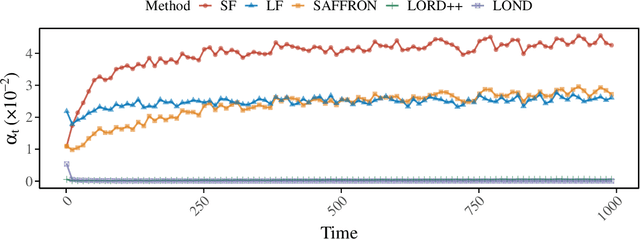

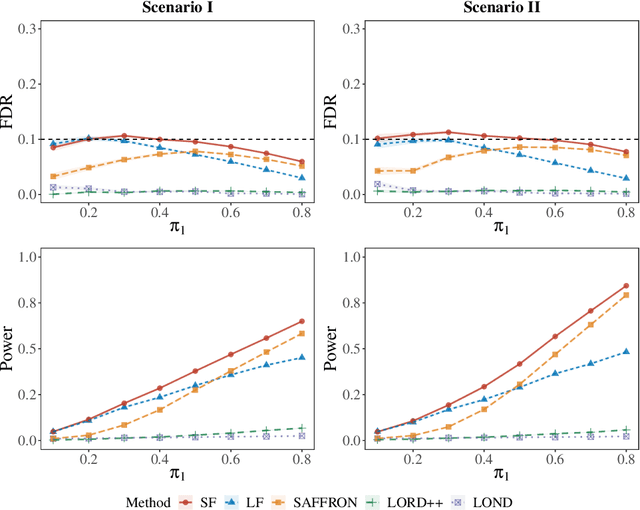
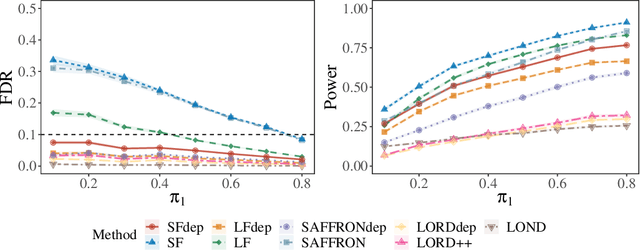
Abstract:We study online multiple testing with feedback, where decisions are made sequentially and the true state of the hypothesis is revealed after the decision has been made, either instantly or with a delay. We propose GAIF, a feedback-enhanced generalized alpha-investing framework that dynamically adjusts thresholds using revealed outcomes, ensuring finite-sample false discovery rate (FDR)/marginal FDR control. Extending GAIF to online conformal testing, we construct independent conformal $p$-values and introduce a feedback-driven model selection criterion to identify the best model/score, thereby improving statistical power. We demonstrate the effectiveness of our methods through numerical simulations and real-data applications.
Conformal Prediction with Cellwise Outliers: A Detect-then-Impute Approach
May 08, 2025
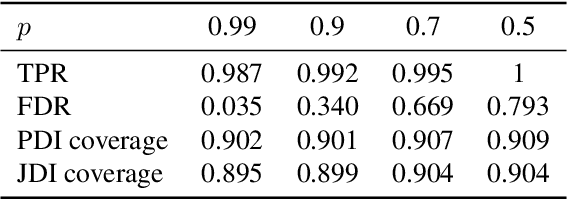
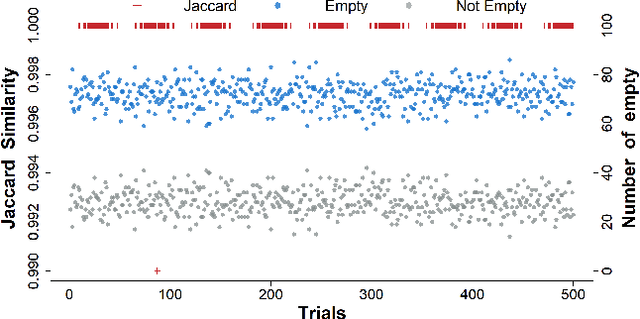
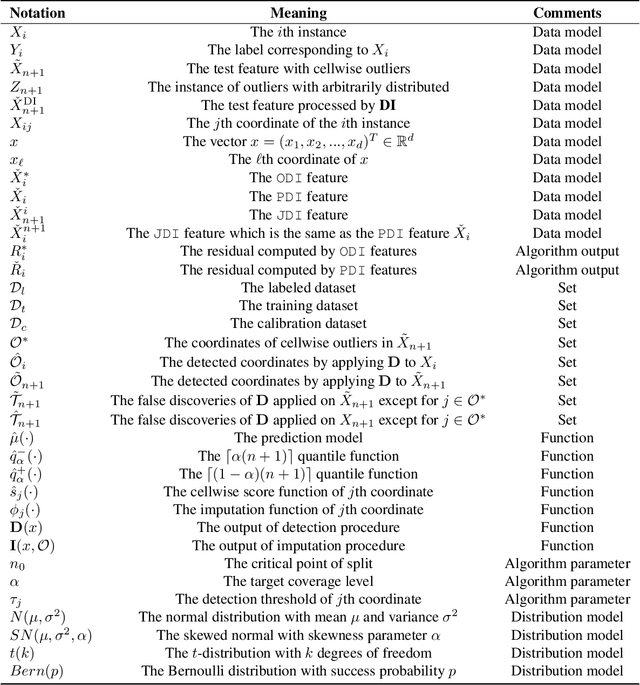
Abstract:Conformal prediction is a powerful tool for constructing prediction intervals for black-box models, providing a finite sample coverage guarantee for exchangeable data. However, this exchangeability is compromised when some entries of the test feature are contaminated, such as in the case of cellwise outliers. To address this issue, this paper introduces a novel framework called detect-then-impute conformal prediction. This framework first employs an outlier detection procedure on the test feature and then utilizes an imputation method to fill in those cells identified as outliers. To quantify the uncertainty in the processed test feature, we adaptively apply the detection and imputation procedures to the calibration set, thereby constructing exchangeable features for the conformal prediction interval of the test label. We develop two practical algorithms, PDI-CP and JDI-CP, and provide a distribution-free coverage analysis under some commonly used detection and imputation procedures. Notably, JDI-CP achieves a finite sample $1-2\alpha$ coverage guarantee. Numerical experiments on both synthetic and real datasets demonstrate that our proposed algorithms exhibit robust coverage properties and comparable efficiency to the oracle baseline.
Robust Multi-Source Domain Adaptation under Label Shift
Mar 04, 2025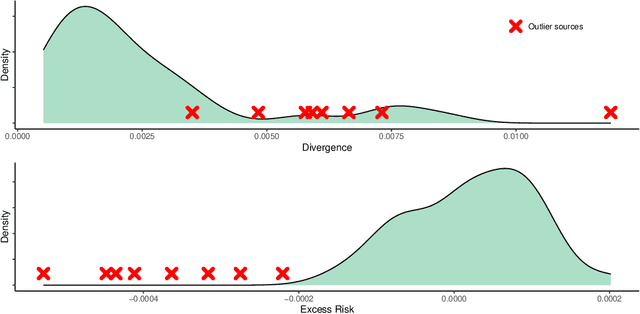
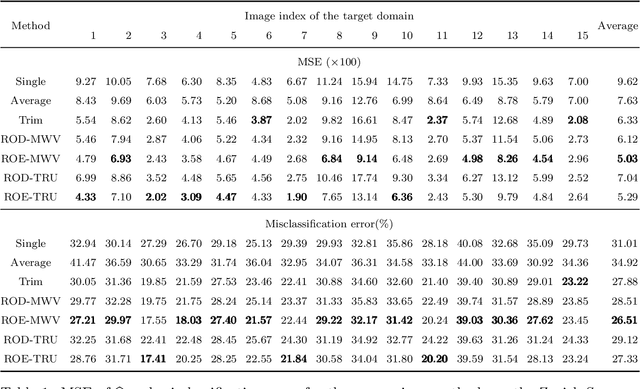
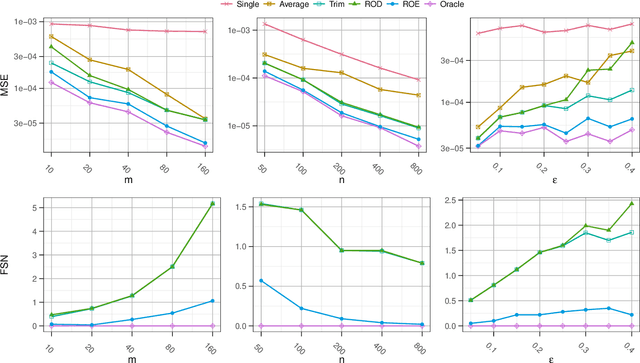
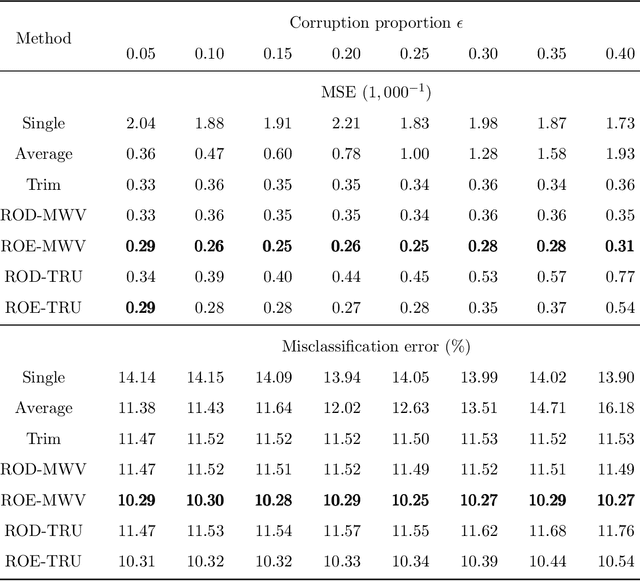
Abstract:As the volume of data continues to expand, it becomes increasingly common for data to be aggregated from multiple sources. Leveraging multiple sources for model training typically achieves better predictive performance on test datasets. Unsupervised multi-source domain adaptation aims to predict labels of unlabeled samples in the target domain by using labeled samples from source domains. This work focuses on robust multi-source domain adaptation for multi-category classification problems against the heterogeneity of label shift and data contamination. We investigate a domain-weighted empirical risk minimization framework for robust estimation of the target domain's class proportion. Inspired by outlier detection techniques, we propose a refinement procedure within this framework. With the estimated class proportion, robust classifiers for the target domain can be constructed. Theoretically, we study the finite-sample error bounds of the domain-weighted empirical risk minimization and highlight the improvement of the refinement step. Numerical simulations and real-data applications demonstrate the superiority of the proposed method.
Conditional Testing based on Localized Conformal p-values
Sep 25, 2024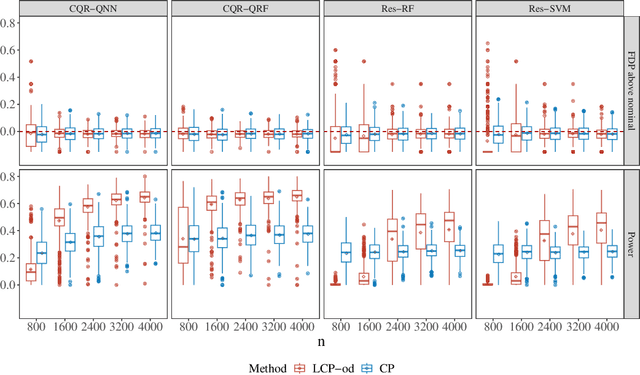

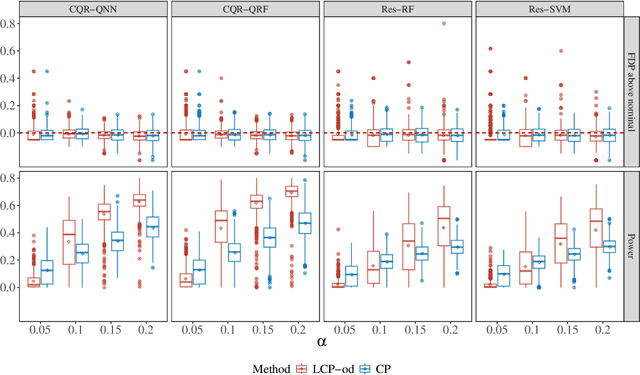

Abstract:In this paper, we address conditional testing problems through the conformal inference framework. We define the localized conformal p-values by inverting prediction intervals and prove their theoretical properties. These defined p-values are then applied to several conditional testing problems to illustrate their practicality. Firstly, we propose a conditional outlier detection procedure to test for outliers in the conditional distribution with finite-sample false discovery rate (FDR) control. We also introduce a novel conditional label screening problem with the goal of screening multivariate response variables and propose a screening procedure to control the family-wise error rate (FWER). Finally, we consider the two-sample conditional distribution test and define a weighted U-statistic through the aggregation of localized p-values. Numerical simulations and real-data examples validate the superior performance of our proposed strategies.
Instant square lattice structured illumination microscopy: an optimal strategy towards photon-saving and real-time super-resolution observation
Feb 05, 2024Abstract:Over the past decade, structured illumination microscopy (SIM) has found its niche in super-resolution (SR) microscopy due to its fast imaging speed and low excitation intensity. However, due to the significantly higher light dose compared to wide-field microscopy and the time-consuming post-processing procedures, long-term, real-time, super-resolution observation of living cells is still out of reach for most SIM setups, which inevitably limits its routine use by cell biologists. Here, we describe square lattice SIM (SL-SIM) for long-duration live cell imaging by using the square lattice optical field as illumination, which allows continuous super-resolved observation over long periods of time. In addition, by extending the previous joint spatial-frequency reconstruction concept to SL-SIM, a high-speed reconstruction strategy is validated in the GPU environment, whose reconstruction time is even shorter than image acquisition time, thus enabling real-time observation. We have demonstrated the potential of SL-SIM on various biological applications, ranging from microtubule cytoskeleton dynamics to the interactions of mitochondrial cristae and DNAs in COS7 cells. The inherent lower light dose and user-friendly workflow of the SL-SIM could help make long-duration, real-time and super-resolved observations accessible to biological laboratories.
An Automatic Design Framework of Swarm Pattern Formation based on Multi-objective Genetic Programming
Nov 01, 2019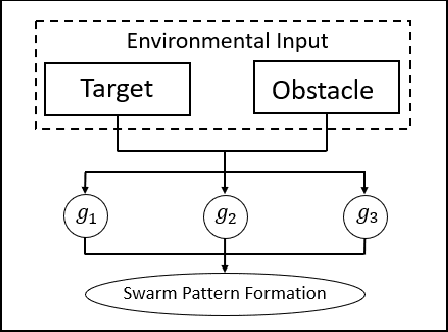
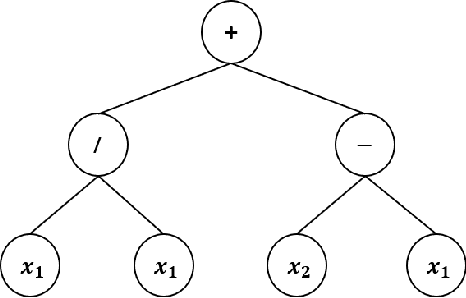
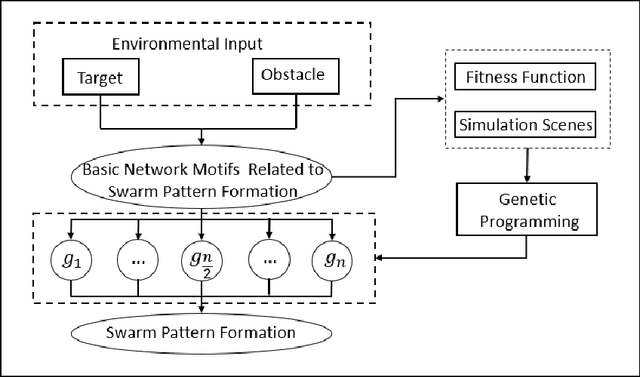
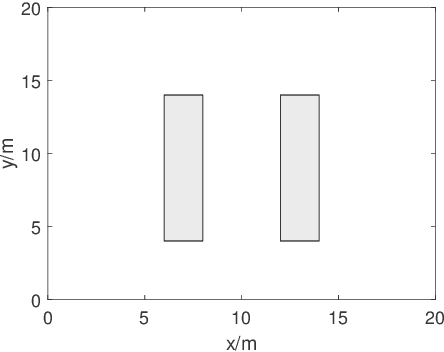
Abstract:Most existing swarm pattern formation methods depend on a predefined gene regulatory network (GRN) structure that requires designers' priori knowledge, which is difficult to adapt to complex and changeable environments. To dynamically adapt to the complex and changeable environments, we propose an automatic design framework of swarm pattern formation based on multi-objective genetic programming. The proposed framework does not need to define the structure of the GRN-based model in advance, and it applies some basic network motifs to automatically structure the GRN-based model. In addition, a multi-objective genetic programming (MOGP) combines with NSGA-II, namely MOGP-NSGA-II, to balance the complexity and accuracy of the GRN-based model. In evolutionary process, an MOGP-NSGA-II and differential evolution (DE) are applied to optimize the structures and parameters of the GRN-based model in parallel. Simulation results demonstrate that the proposed framework can effectively evolve some novel GRN-based models, and these GRN-based models not only have a simpler structure and a better performance, but also are robust to the complex and changeable environments.
Push and Pull Search Embedded in an M2M Framework for Solving Constrained Multi-objective Optimization Problems
Jun 02, 2019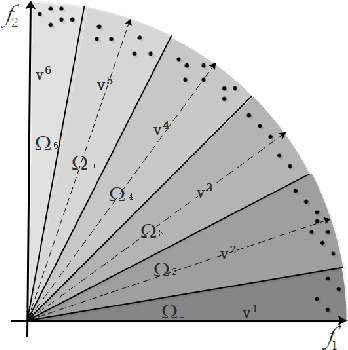
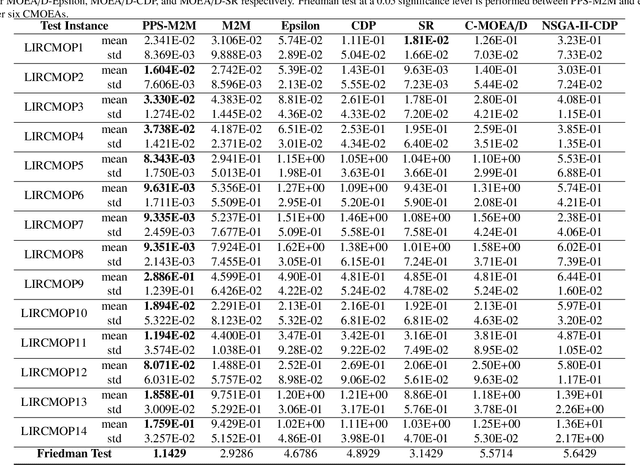
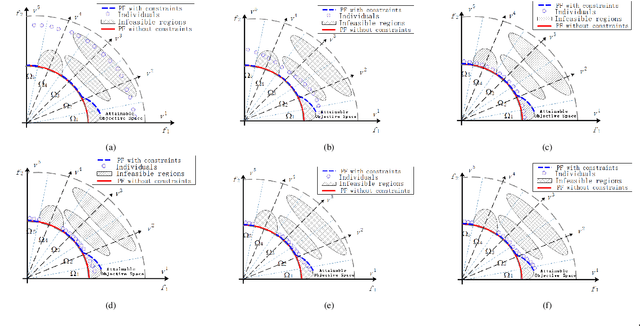

Abstract:In dealing with constrained multi-objective optimization problems (CMOPs), a key issue of multi-objective evolutionary algorithms (MOEAs) is to balance the convergence and diversity of working populations.
Embedding Push and Pull Search in the Framework of Differential Evolution for Solving Constrained Single-objective Optimization Problems
Dec 16, 2018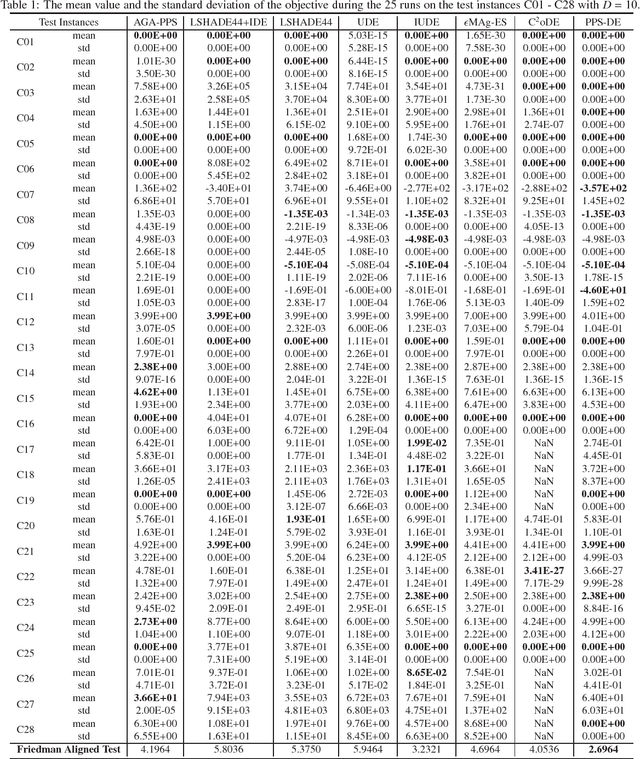
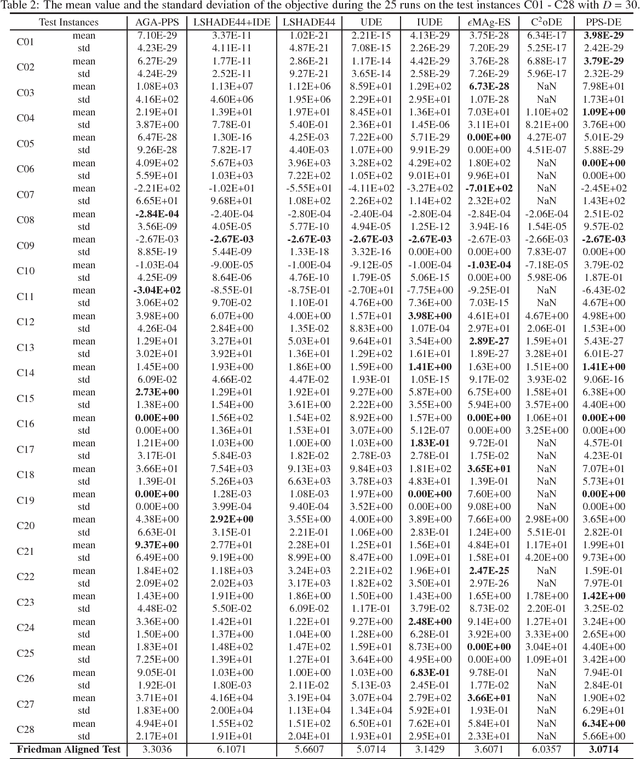
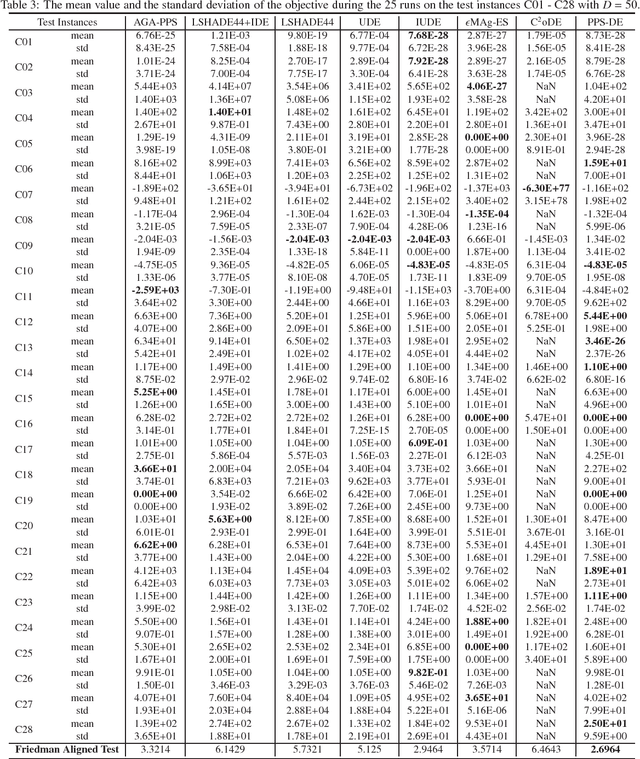
Abstract:This paper proposes a push and pull search method in the framework of differential evolution (PPS-DE) to solve constrained single-objective optimization problems (CSOPs). More specifically, two sub-populations, including the top and bottom sub-populations, are collaborated with each other to search global optimal solutions efficiently. The top sub-population adopts the pull and pull search (PPS) mechanism to deal with constraints, while the bottom sub-population use the superiority of feasible solutions (SF) technique to deal with constraints. In the top sub-population, the search process is divided into two different stages --- push and pull stages.An adaptive DE variant with three trial vector generation strategies is employed in the proposed PPS-DE. In the top sub-population, all the three trial vector generation strategies are used to generate offsprings, just like in CoDE. In the bottom sub-population, a strategy adaptation, in which the trial vector generation strategies are periodically self-adapted by learning from their experiences in generating promising solutions in the top sub-population, is used to choose a suitable trial vector generation strategy to generate one offspring. Furthermore, a parameter adaptation strategy from LSHADE44 is employed in both sup-populations to generate scale factor $F$ and crossover rate $CR$ for each trial vector generation strategy. Twenty-eight CSOPs with 10-, 30-, and 50-dimensional decision variables provided in the CEC2018 competition on real parameter single objective optimization are optimized by the proposed PPS-DE. The experimental results demonstrate that the proposed PPS-DE has the best performance compared with the other seven state-of-the-art algorithms, including AGA-PPS, LSHADE44, LSHADE44+IDE, UDE, IUDE, $\epsilon$MAg-ES and C$^2$oDE.
 Add to Chrome
Add to Chrome Add to Firefox
Add to Firefox Add to Edge
Add to Edge